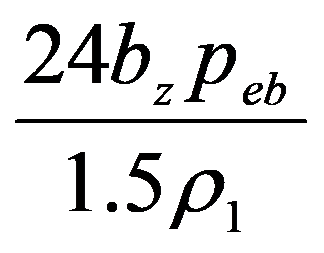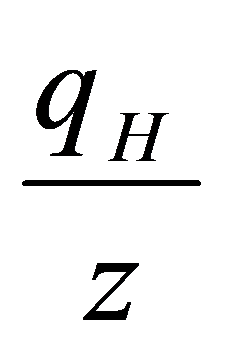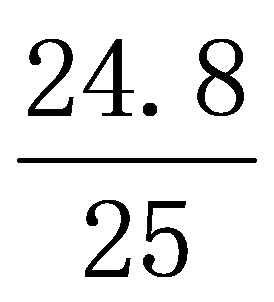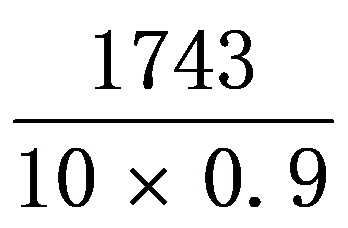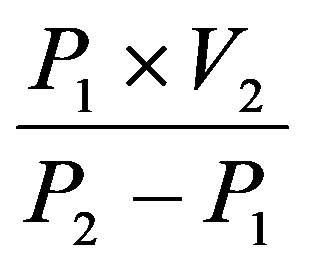4,300DWT化学品动力装置设计毕业论文
2020-04-10 16:12:19
摘 要
第1章 绪论 8
第2章 主机选型论证 8
2.1概述 8
2.2设计依据 9
2.2.3航速,续航力 9
3主要机械设备估算 16
3.1减速齿轮箱 16
3.2船舶电站 16
3.3组合锅炉 18
3.4燃油系统设备估算及选型 18
3.5滑油系统设备估算及选型 22
3.6冷却系统设备估算及选型 23
3.7压缩空气系统设备估算及选型 25
3.8保船系统设备估算及选型 26
3.9通风系统 29
3.10其他设备 31
4主要机械设备明细表 31
4.1主机组 31
4.2柴油机发电机组 32
4.3应急发电机组 32
4.4泵 32
4.5制N2装置 34
4.6防污染设备 34
4.7分油机 34
4.8机舱风机 35
4.9消防设备 36
5轮机说明书 36
5.1动力装置 36
5.2船舶系统 51
5.3液货系统 54
结论 59
参考文献 60
致谢 61
摘 要
船舶动力装置包括推进装置、辅助装置、船舶管路、甲板机械和自动化系统,而它的设计是船舶制造业的核心问题。主推进装置的选型和各装置的布置是否合理,将直接影响船舶的运行状态和运行成本。大多数现代运输船舶的主机是低速或中速柴油发动机,用它直接驱动或减速后,驱动安装在尾部的螺旋桨推动船前进。船、机、桨的匹配也是整个设计中的重中之重。在造船业目前还比较低的今天,成本表现尤为重要。一般来说,主机的价格约占整个船费用的1/3。在越来越严格的规章制度下,主机的选型尤为重要。主机是整个船舶的动力源,也是最大的污染源和噪声源。因此,应考虑辅助设备的选择和布置,以保持主机和设备的正常运行,减少排放。
本文针对船舶的已知条件,首先进行船舶主机选型论证,得到了主发动机的主要参数,和螺旋桨,螺旋桨和船舶速度间的关系,借此估算各系统对船舶主要机械设备,计算他们的各项主要参数。选择符合计算要求的型号,然后将设备及相应的主要参数汇编成一个设备明细表,反映船舶主要设备的状况。最后,对船舶的布局和各种系统以及船上的主要设备和功能作了概括性的描述,形成对船舶情况大致描述的轮机说明书。利用AutoCAD等绘图工具,对机舱各层主要机械设备的外形和布局进行了粗略的设计,形成了6张机舱及油泵布置图和1个燃油净化管路系统示意图。
本文主要是通过对船舶系统主要设备的计算和布置,来了解船舶系统是如何根据船舶的需要而设计的。可以看出,每一个系统都是密切相关和密切相关的。论文的研究就是通过这样的计算和设计,合理分配船舶上的需求,使船舶能够优化各系统之间的联系,最大限度地利用有限的能量,避免能源浪费。
关键词:主机,设备,船舶系统,机舱布置。
Abstract
The ship power plant includes propulsion, auxiliary device, ship pipeline, deck machinery and automation system, and its design is the core of the shipbuilding industry. The selection of main propulsion unit and the layout of each device will directly affect the operation state and operation cost of the ship. Most modern shipping hosts are low-speed or medium speed diesel engines, which drive or decelerate directly, driving the propeller mounted at the tail to push the ship forward. Matching ship, aircraft and paddle is also the top priority in the whole design. Nowadays, shipbuilding industry is relatively low. Cost performance is particularly important today. Generally speaking, the price of the main unit accounts for about 1/3 of the whole ship's cost. Under the increasingly strict rules and regulations, the selection of main engine is particularly important. The main engine is the power source of the whole ship, and it is also the largest source of pollution and noise. Therefore, the selection and arrangement of auxiliary equipment should be considered so as to maintain normal operation of host and equipment and reduce emissions.
In this paper, the main parameters of the main engine, the relationship between the propeller, the propeller and the speed of the ship are obtained, and the main parameters of the main machinery are calculated by the main parameters of the main engine. Select the type that meets the requirement of calculation, then compile the equipment and the corresponding main parameters into a device list, which reflects the status of the main equipment of the ship. Finally, the layout of the ship, the various systems and the main equipment and functions on the ship are described generality, and a general description of the ship's condition is formed. Using AutoCAD and other drawing tools, the outline and layout of the main mechanical equipment in each layer of the engine room are roughly designed, and 6 engine rooms and oil pump layout drawings and 1 fuel purification pipeline system schematic drawings are formed.
This article is mainly through the calculation and layout of the main equipment of the ship system to understand how the ship system is designed according to the needs of the ship. It can be seen that every system is closely related and closely related. The research of this paper is to rationally allocate the demand on the ship through such calculation and design, so that the ship can optimize the connections between the systems, make maximum use of the limited energy and avoid the waste of energy.
Key words: main engine, equipment, ship system, engine room layout.
第1章 绪论
改革开放以来,中国的经济和科技实力有了显著的飞跃,但在某些方面,与国外相比,仍有很大的差距。
中国的造船业已经超过了韩国和日本在世界上排名世界第一,但中国是一个造船大国而不是一个造船强国。中国的船舶技术和装备水平,产品的研发、研发能力和制造技术仍落后于日本、韩国、欧洲和美国。因此,面对挑战,中国需要提高自主创新能力,发展造船业的核心技术,走在船舶建造前沿。同时,要大力发展海洋装备产业,长期依赖进口的关键设备,受制于人。因此,要想不断缩小日本与韩国的差距,就必须长期培养专业人才。
在这个世界船舶动力装置中为船舶提供动力的机器是柴油机或燃气轮机,这些机器的能源是燃烧燃料。因此,通过对这些机械及其配套设备的可行性试验和计算分析,可以得到机械设备的主要参数,并能获得一系列的可靠性参数,如设备的能耗和使用寿命。之后,优化了它们之间的匹配,从而减少能源浪费,提高经济效益,使各系统的效率也保持在较高水平。因为低碳减排是当今世界造船业的主要任务。
本文从计算最大耗能设备、主机的角度出发,根据给定船舶的工况选择匹配主机。然后对给定船舶的主要机械设备进行计算,并计算出各自的主要参数,从而选择合适的模型,最后对整个系统进行优化。
第2章 主机选型论证
2.1概述
主机选型是动力装置设计的核心。主机的性能直接影响船舶的各项系数,如:船舶营运的经济性、操纵性、可靠性、振动及噪音、以及机舱布置等。因此,主机选型对动力装置设计是相当重要的。
匹配设计分两个阶段,先是初步匹配设计。已知船舶主尺度,船体有效功率曲线Pe(v),船舶要求的航速Vs和螺旋桨的直径D或转速n确定螺旋桨的效率,螺距比p/D,螺旋桨的最佳直径和所需主机的功率,便于主机与传动设备的选型。然后是终结匹配设计。根据主机的功率与转速,船舶的有效功率曲线,传动设备与轴系的传送效率,桨的收到动率和船身效率等计算船舶所能达到的航速和螺旋桨的最佳要素(螺旋桨直径,螺距比及螺旋桨效率)。
主机选型应该根据本船的特点以及船体设计所提供的资料来进行。本船是化化学品船,对主机选型,有一些要求:
1.重量尽量的轻和外形尺寸应尽量的小
2.对滑油和燃油的要求比较低.
3.主机价格比较低
4.震动和噪音较小
5.主机缸数少,行程长,转速低。
2.2设计依据
2.2.1船型
本船为单机单桨尾机型船舶,采用一台主机,经弹性联轴节、齿轮箱及螺旋桨轴驱动定距螺旋桨。
机舱设备按以下条件进行设计:
环境温度: 45℃
大气压力: 100kPa
相对湿度: 60%
海水温度: 32℃
主机、组合锅炉燃用180cst 50℃燃料油,燃油系统能转换为使用轻柴油。主发电柴油机及应急发电柴油机燃用轻柴油。
2.2.2船舶主要尺度
总长 | Loa | 93.80 | m | 载重量 | 4300.00 | t |
水线长 | LwL | 90.00 | m | 主机型号 | 8320Zcd-6 | |
垂线长度 | Lpp | 96.80 | m | 标定功率 | 2060kW | kW |
型宽 | B | 15.60 | m | 试航速度 | 11.2 | kn |
型深 | D | m | 服务航区 | 近海 | ||
设计吃水 | d | m | 船员人数 | 12 | 人 |
2.2.3航速,续航力
在设计吃水6.00m,船体处于光滑无污底情况,在风力小于莆氏风级三级的平静深水区域,主机发出90%最大持续功率,5%海上风浪裕度时的服务航速为11.2kn。
主机发出90%最大持续功率,在风力莆氏风级三级以下海况时,服务航速Vs=11.2kn/h时的续航力为264h。
2.3船舶阻力计算
为了便于研究,船舶阻力通常分为几个部分:民用船舶通常航行在水面上,按产生阻力的流体种类划分,船舶的阻力可分为空气阻力和水阻力。在实际研究中,水的阻力又分为船体在静水中航行时的静水阻力和波涛中的汹涛阻力。根据船体承受的位置来区分,静水阻力可分为裸船阻力和附体阻力。
根据上述方法,船体阻力可分为两部分:一部分是裸船体在静水中所受到的阻力,即船体阻力,按船体阻力发生的物理本质分,船体阻力又可分为摩擦阻力、形状阻力和兴波阻力,另一部分就是包括空气阻力、附体阻力和汹涛阻力,统称为附加阻力。
- 摩擦阻力
Rf=afS
1)计算船的湿面积S=Ld(2 B/2d)/(1.625-Cb)
先求排水体积▽,根据方型系数(Cb)公式Cb =▽/L×B×T,
可以求的湿面积S=90.00×6×(2 15.6/2×6)/(1.625-0.85)=2299.35m2
2)af=3.66kg/m2 参见杜嘉立
可以算出摩擦阻力Rf=2299.35×3.66=8.42×103(N)
2、剩余阻力RR(形状阻力RE和兴波阻力RW)
RR=RE RW=1/2V2ξRρΩ
式中:RR—剩余阻力(公斤);
ξR=f(V/√gL)剩余阻力系数;
V/√gL—弗劳德数,用Fr表示;
Ω—为上文的湿面积S(米2);
ρ—水的密度(公斤·秒2/米4)海水取102.5
g—重力加速度(米/秒2)。
佛鲁特数Fr=11.2×0.5148/(9.8×90.00)1/2=0.194,由于本船属于肥胖型船,所以查图7-10中的曲线Ⅰ,则ξR=1.3×10-3。
RR=0.5×(11.2×0.5148)2×1.3×10-3×102.5×2299.35=5.09×103(公斤).即,剩余阻力RR =4.76×103×9.8=4.99×104(N)
3、附加阻力
本船为一般民用船舶,而且采用的是单螺旋桨结构,附体阻力为裸船阻力的5%~10%,所以取Cap=8%;一般船舶的空气阻力通常不大于裸船阻力的2%~4% ,所以取Caa=3% ;汹涛阻力的大小随水面的状态而定,在实际情况中,汹涛阻力常用备用马力来考虑,备用马力的多少由船型、船的服务性质及航区的气象条件而定,普通船舶的备用马力约为静水试航马力的15%或更大一些,本船取15%。
所以,船体阻力R=(RR+Rf)×(1 8% 3% 15%)
= (4.99×104 8.42×103)×1.26
=7.35×104(N)
2.4求功率曲线(爱尔法)
爱尔分析大量船模及实船试验结果,提出了估算民用船舶有效功率的一项式法,表达式为:Pe=0.735△0.64V3/C
式中△为排水量(t);
V为航速(kn);
Pe为有效功率(kw)
C为爱尔系数
型排水体积▽= L×B×T×Cb
以上是毕业论文大纲或资料介绍,该课题完整毕业论文、开题报告、任务书、程序设计、图纸设计等资料请添加微信获取,微信号:bysjorg。
相关图片展示:
